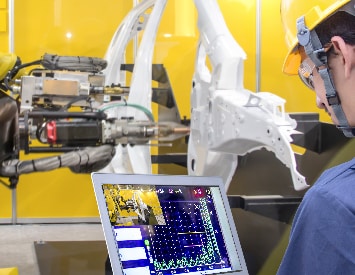In the realm of engineering, female brilliance often goes unnoticed, and opportunities remain elusive. But the time has come to change that!
The engineering industry plays a vital role in shaping the world we live in, from constructing awe-inspiring infrastructures to developing cutting-edge technologies. Despite its significance, the engineering sector faces a persistent challenge – the underrepresentation of female engineers.
To create a more diverse and inclusive engineering landscape, it is crucial to address the obstacles that hinder females from selecting engineering and then remaining in the industry.
This article looks at the challenges faced by female engineers and explores the strategies that can empower and encourage them to thrive in their engineering careers.
Unlocking the Retention Riddle
The retention of female engineers in male-dominated fields presents a series of challenges that necessitate immediate attention.
One of the persistent issues is the existence of gender bias and stereotypes, leading to unequal opportunities for women. This bias, coupled with a non-inclusive workplace culture, can cause female engineers to feel marginalized, ultimately contributing to their attrition from the field. Moreover, unconscious biases significantly influence decision-making processes, resulting in disparities in promotions and career advancement opportunities for female engineers.

Another critical concern is the lack of sufficient mentorship and role models, which impedes the career progression and job retention of female engineers. Without adequate support and guidance, talented female professionals may struggle to advance in their careers. Additionally, the gender pay gap remains a pressing issue, leading to dissatisfaction among female engineers and influencing their decisions to stay or leave.
Inflexible work arrangements further compound the problem, as female engineers with family commitments may find it challenging to maintain a work-life balance. This lack of flexibility can prompt some female engineers to explore alternative career paths with more accommodating arrangements. Furthermore, the lack of recognition for the valuable contributions of female engineers can diminish their motivation and commitment to their roles.
Lastly, the underrepresentation of women in Science, Technology, Engineering, and Mathematics (STEM) education limits the pool of potential female candidates available for engineering positions. Addressing this disparity in education is crucial for nurturing a more diverse talent pipeline in the engineering industry.
Why We Need to Tackle This Challenge
The underrepresentation of females in engineering roles presents a significant problem that goes beyond mere numbers. It perpetuates gender inequalities and reinforces stereotypes, ultimately limiting opportunities for women to pursue careers in technical fields.
This gender difference also has economic consequences, as excluding women from engineering hampers growth and development by neglecting the talents and skills of half the population. To address these issues, it is essential to foster diversity and inclusion in engineering teams.
Diverse teams have been proven to outperform homogenous teams, leading to improved problem-solving, innovation, and overall productivity. Moreover, engineering products and solutions are meant to serve the broader society.
Having a diverse engineering workforce ensures that the needs of all users are better understood and addressed without bias, resulting in more inclusive and effective designs.

In a recent interview with EIT’s Deputy Dean and a Chartered Professional Engineer Dr. Indumathi V, she said “Research has shown that diverse teams can bring a range of perspectives and problem-solving approaches to the table, which can lead to more innovative and effective solutions. Addressing this disparity not only benefits the women seeking engineering careers but also the industry.
There are a complex set of factors that affect female retention in the STEM workforce. Addressing these challenges requires a multifaceted approach. It involves efforts from educational institutes, workplaces, policymakers, government, and society as a whole.
We have a great % of the female population and talent that goes untapped, particularly when there are skills shortages in the industry. Females play a critical role in STEM fields; they offer a different perspective which is often overlooked in a male-dominated environment.
Our world population has an equal representation of males and females. Most inventions and innovations have been created by men, from a male perspective. By including diverse perspectives, businesses have an opportunity to address a whole new market! The female consumer.”
How Do We Crack the Code?
It all starts at the top!
Company leaders and management need to lead by example, making a genuine commitment to diversity, and setting clear goals for inclusivity. Creating an inclusive workplace culture that values diversity and ensures respect and fairness for all employees is essential in cultivating an environment where female engineers can thrive.
Furthermore, establishing mentorship and sponsorship programs becomes instrumental in providing ongoing support to female engineers throughout their careers. In this situation, senior engineers play a pivotal role in advocating for their advancement and helping them navigate the challenges they may encounter.
Encouraging diverse leadership representation will not only create an inclusive environment but also serve as an inspiration for aspiring female engineers, demonstrating the potential for success within the industry.
Another way is to conduct training and implement transparent evaluation processes for promotions which can minimize bias and promote a more equitable workplace.
Ensuring pay equity is achieved requires conducting regular pay audits to identify and address any gender pay gaps transparently and promptly.
Click here to enroll in an engineering program today!
Essential Tips for Female Innovators
Building a strong support network is vital for any aspiring female engineer. By connecting with fellow female engineers, mentors, and allies, one can gain invaluable guidance and encouragement throughout a career.
Believing in one’s abilities and recognizing the value one brings to the field fosters self-confidence and empowers one to make significant contributions.
Continuous learning and staying updated on the latest developments in the field are crucial to remaining competitive.
Being assertive and advocating for oneself is essential. Confidently expressing ideas and goals ensures that one’s voice is heard and respected. Defining clear career aspirations and setting achievable goals provides a roadmap for progress and helps track achievements and growth.
Preparation is key when it comes to negotiations and promotions. It is also important to ensure that accomplishments are visible to superiors and colleagues, enhancing professional reputation and opening doors to new opportunities.
Addressing biases constructively, armed with facts and evidence, promotes diversity and inclusion in the workplace. Finding a healthy work-life balance is essential for excelling in a career while taking care of personal well-being and responsibilities.
Staying resilient and persevering through challenges leads to personal growth and success in the engineering field. By adopting these strategies, one can navigate her career successfully and make a significant impact in the industry.


